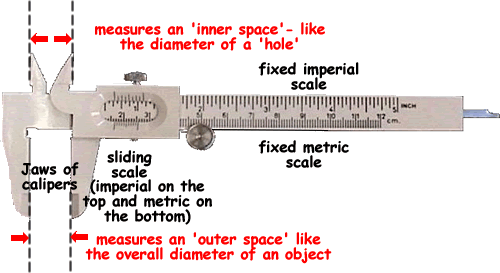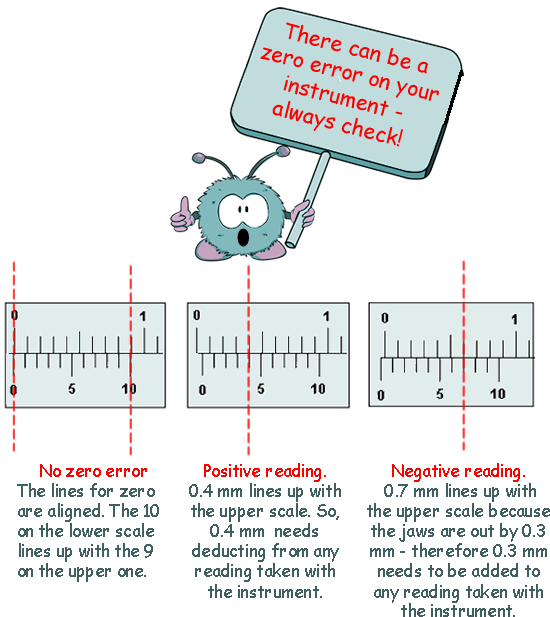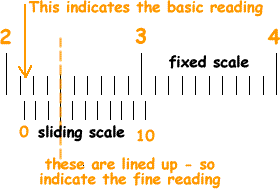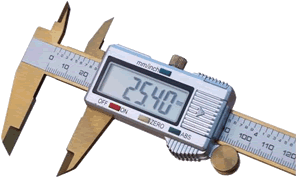Vernier Calipers

-
The Vernier caliper is an very precise measuring instrument; the reading error is 0.1 mm.
-
Close the jaws lightly on the object to be measured.
-
Make sure that the axis of the object is perpendicular to the caliper. This is necessary to ensure that you are measuring the full diameter of it.
-
Take care to look at the correct scale - many instruments are calibrated in imperial as well as metric units
Zero error
Before you use the calipers you need to check for a zero error. Close the jaws of the calipers and look carefully at the scales.If there is no zero error the zeros should line up exactly. Otherwise you need to look carefully at the scale alignment to determine whether your reading will be less or more than it should be.

Reading a vernier scale
- Notice that there is a fixed scale and a sliding scale.
- The boldface numbers on the fixed scale are centimeters.
- The small marks on the fixed scale between the boldface numbers are millimeters.
- There are ten small marks on the sliding scale. The left-most mark on the sliding scale will let you read from the fixed scale the number of whole millimeters that the jaws are opened.

- In the example above, the leftmost mark on the sliding scale is between 2.1 cm and 2.2 cm, so the number of whole millimeters is 21.
- Next we use the sliding scale to find the tenths of millimeters. Notice that the ten marks on the sliding scale are the same width as nine marks on the fixed scale. This means that one of the marks on the sliding scale will align with a mark on the fixed scale; the others will miss.
- The number of the aligned mark on the sliding scale tells you the number of tenths of millimeters. In the example above, the 3rd mark on the sliding scale is in coincidence with the one above it, so the caliper reading is (21.3 ± 0.1) mm. You have to be careful when reading this value to avaoid a parallax error - therefore this last reading is to within one division and gives your 'error' provision.
- On those rare occasions when the reading just happens to be a "nice" number like 2 cm, don't forget to include the zero decimal places showing the precision of the measurement and the reading error. So not 2 cm, but rather (2.00 ± 0.01) cm or (20.0 ± 0.1) mm.
 Modern digital calipers
Modern digital calipers
These make the readings much easier - but do not require much skill in reading - therefore they would not be used to assess your 'high level skill' in reading instruments!






 Modern digital calipers
Modern digital calipers


